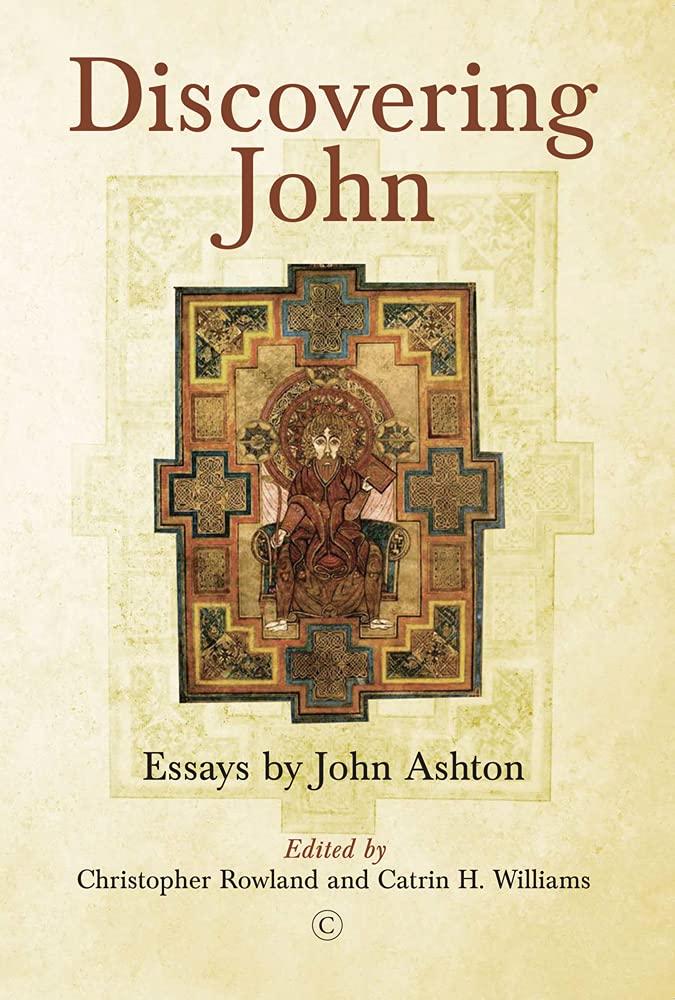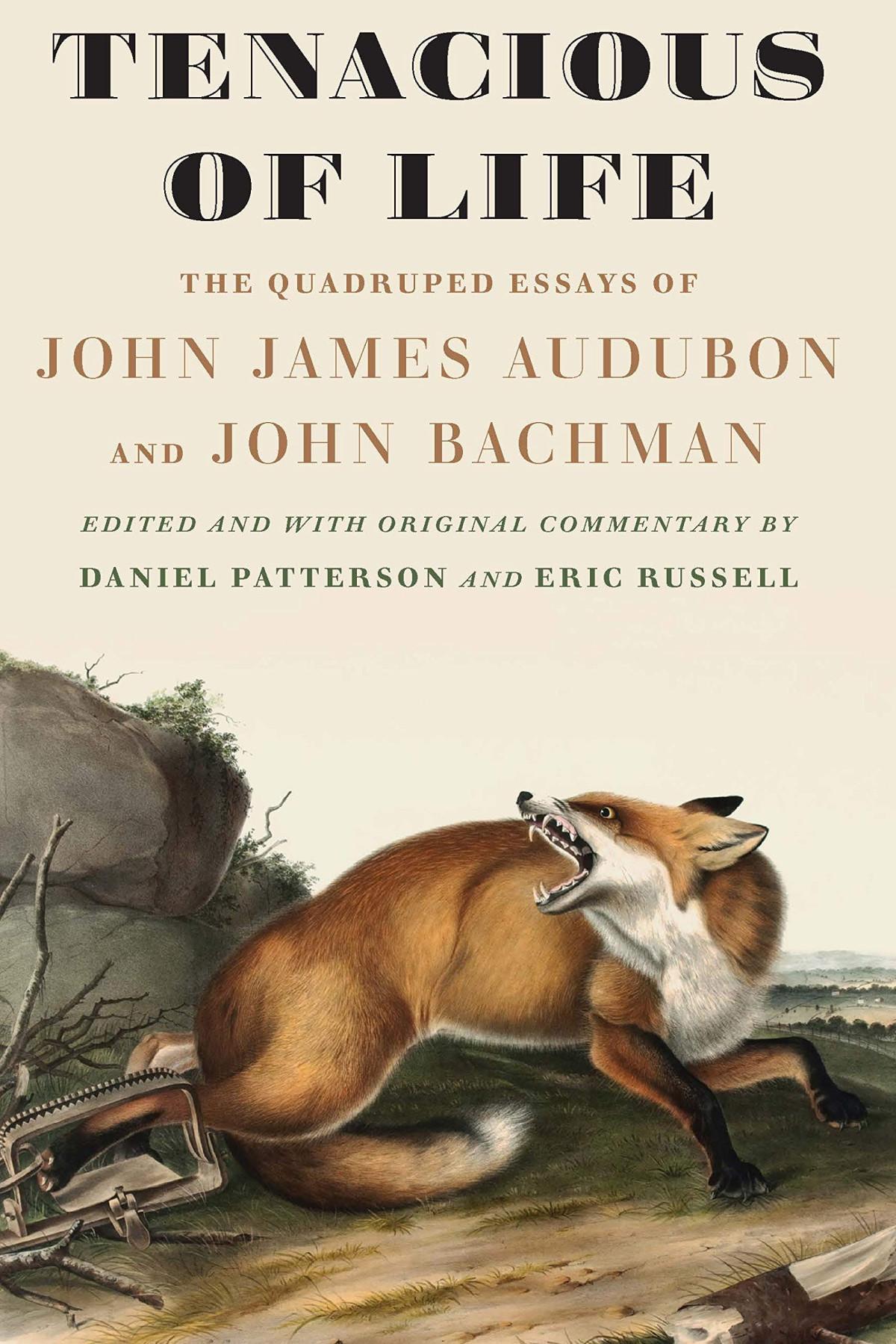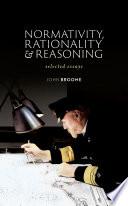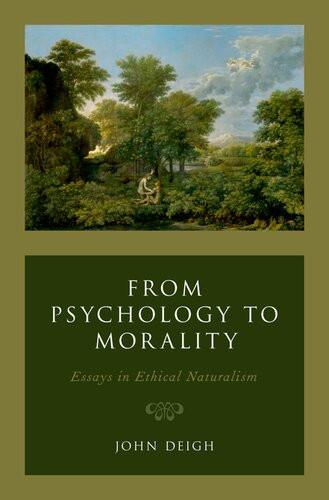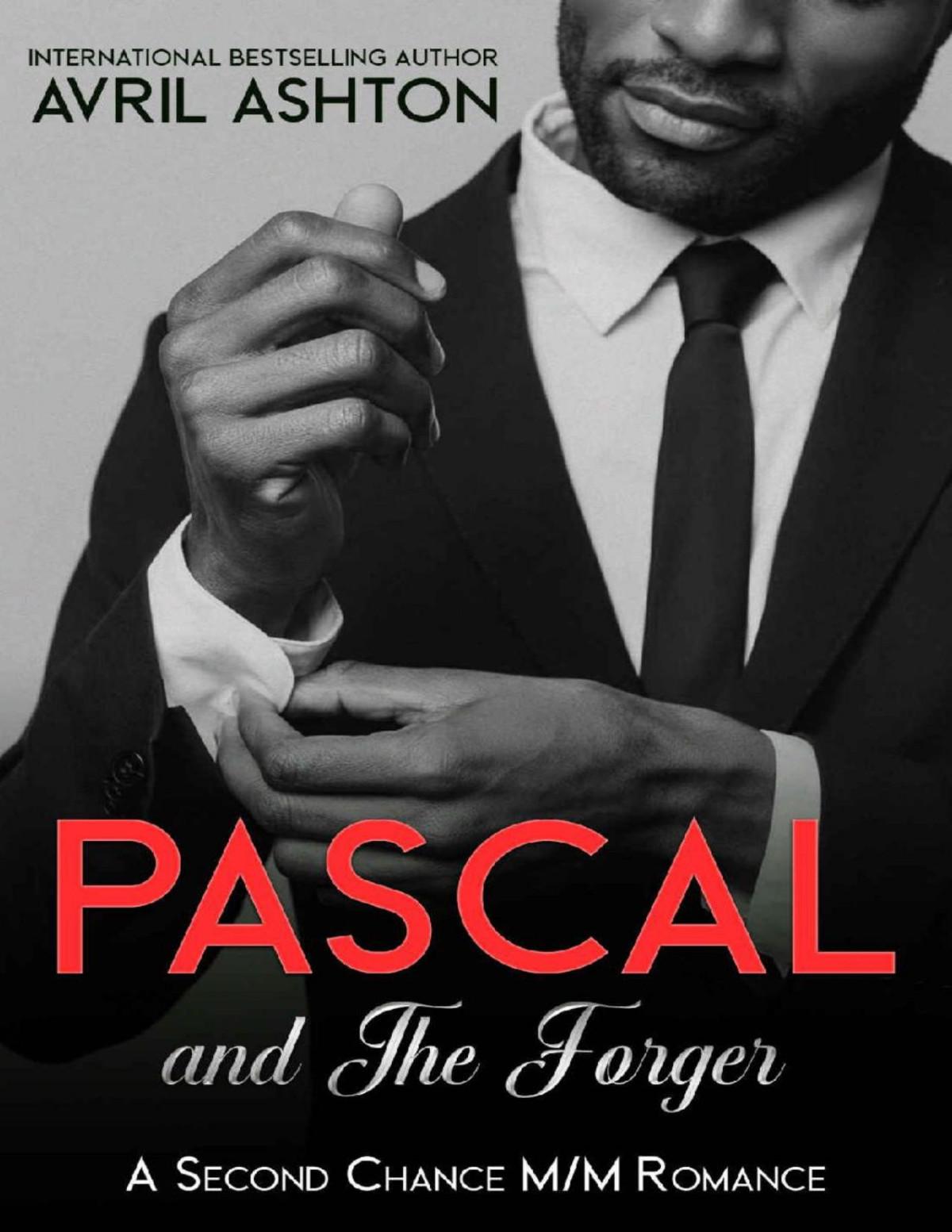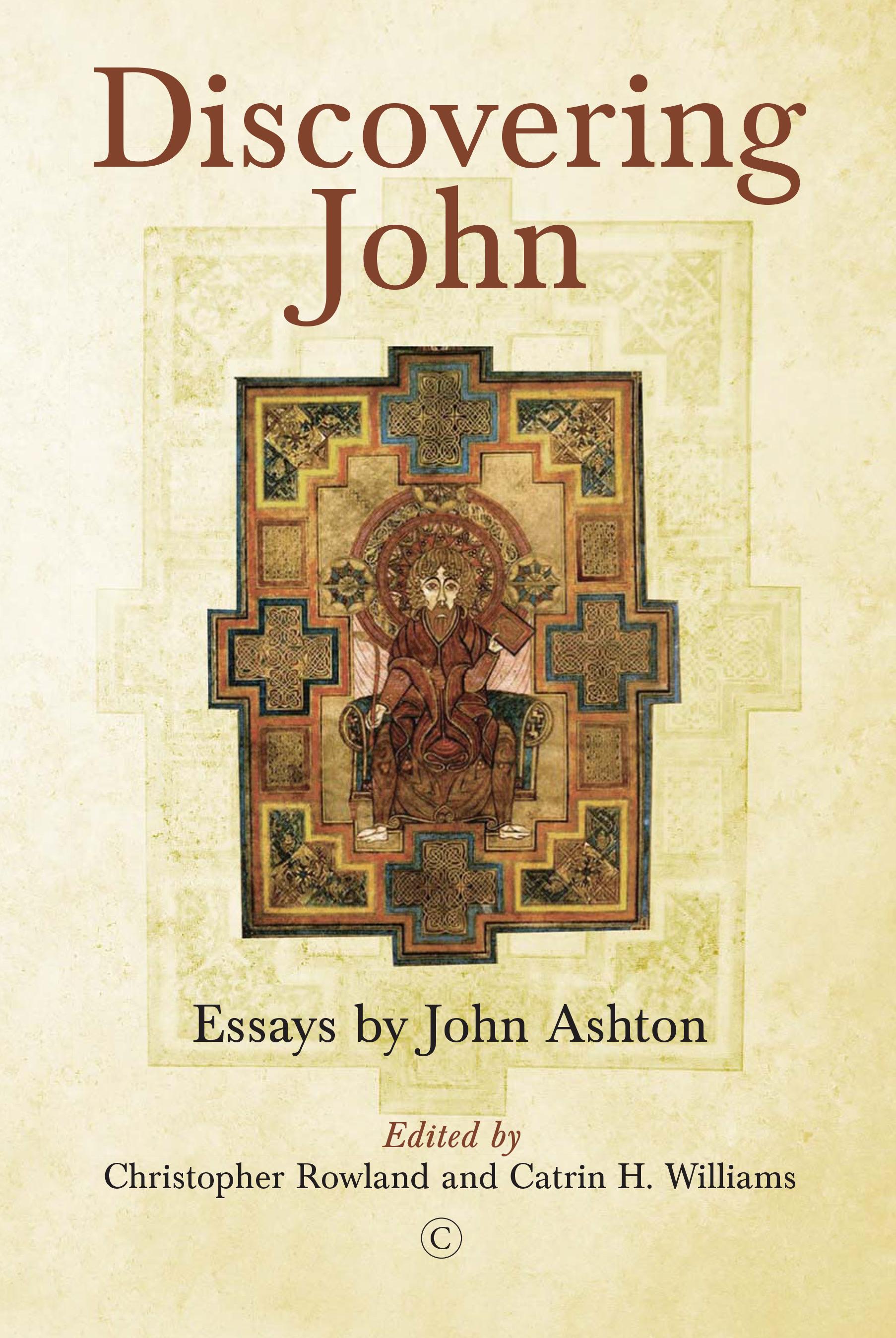Discovering the Gospel of John
A Fifty-Year Journey of Exploration
La rage de vouloir conclure est une des manies les plus funestes et les plus stériles qui appartiennent à l’humanité.
—GUSTAVE FLAUBERT
I: The Early Years ( 1964 – 70 )
The following essay is autobiographical only insofar as events of my own life have a bearing upon my study of the Gospel of John and the conclusions I have reached concerning its nature and significance. Looking back now, in my eighties, I note that if the Gospel was composed during the 80s of the first century CE (as it may well have been) its author, if he too was in his eighties, could have been recollecting events that had occurred fifty years previously.
One main purpose of this essay is to summarize my own thinking as it has developed over the years on a variety of topics related to the Gospel of John. On some issues it has scarcely changed, and my comments on these have come to seem wearisomely repetitive even to myself. But it should nevertheless be possible, even so, to single out certain key points or especially telling arguments. On other topics an initial insight has been reinforced from time to time by ideas that seem to emerge from different areas of thought, and I want to describe these as carefully as possible. On
one or two topics I have increased my knowledge, occasionally because new evidence, mostly from Qumran, has come to light, more often because my own reading has broadened. On others, looking at the evidence and the arguments afresh, I have become more critical and more cautious. On one particular topic my ideas have been in a constant state of flux, so that even now, so many years later, I cannot be sure that they will not change again.
If I were to discuss all these topics one after the other without interruption, the biographical element would be lost. Instead, I propose to intersperse them between snippets of biography. The order in which I treat them may seem random; but I will take them up as closely as I can to the point in my own story in which I began to give each careful attention.
Except for a few passages of personal reminiscence I leave aside those aspects of my life (several of them very important to me) that have nothing to do with scholarship. The biographical sections of the essay will be placed between summaries of my work on John, especially Understanding the Fourth Gospel 1 But some of what I consider to be the most important ideas occurred outside the context of the composition of that book, and I will consider each of these in full, starting from the moment in which I began to give them serious consideration.
Understanding the Fourth Gospel, begun in 1980, took nearly ten years to write and has fourteen chapters. Four of these, written between 1980 and 1981, will be summarized in the fourth section of this essay, five more in the sixth, and the remaining five in the seventh. Shorter contributions, notably the articles contained in my collection Studying John: Approaches to the Fourth Gospel and the chapters added to the second edition of Understanding the Fourth Gospel, will be summarized at appropriate points. I will end with a résumé of the main conclusions of my recently published book, The Gospel of John and Christian Origins. Not all readers of this essay, of course, will wish or need to be reminded of the substance of my work on the Gospel: warned in advance, they are invited to skip paragraphs that do not interest them. But a main part of my purpose here is to repeat in shortened form the work of the last fifty years. I will also note briefly issues on which I have changed my mind.
In 1949, at the age of eighteen, I joined the Society of Jesus (usually known as the Jesuits, or the Jesuit Order), accustomed to providing a very full education for those of its members thought likely to benefit from it.
1. Ashton, Understanding the Fourth Gospel, 1st edition, 1991; 2nd edition, 2007.
After three years studying scholastic philosophy, plus a fourth learning how to be a schoolteacher, I was sent to Campion Hall, Oxford (to this day still run by the Jesuits) in order to pursue the four-year course of classical literature, philosophy, and history known as Greats. Both the scholastic philosophy I had been taught earlier and the mixture of modern (analytic) and classical philosophy (Plato and Aristotle) that I learned in Oxford have influenced my thinking ever since. But the journey I am about to describe had not yet begun, for it was not until 1964—the third year out of the four that I spent studying theology at a Jesuit seminary in France—that I was stimulated to think seriously about the Gospel of John.
The so-called Séminaire des Missions, high up on the Montée de Fourvière, was housed in a large building (now a musical conservatory) that overlooks the old quarter of the city of Lyons; and it was there, listening to the lectures of Xavier Léon-Dufour, that it first dawned on me that there is more to John’s Gospel than meets the eye. The insight that most impressed me (as, looking back, I came to realize) was based on an article he had written many years earlier on the story of the cleansing of the temple in John 2 and Jesus’s subsequent prophecy of his own death and resurrection. Dufour had stressed the distinction implicit in this story between the partial comprehension of those listening to Jesus’s words within the story and the fuller understanding to be expected of readers of the Gospel (who, of course, already knew the outcome).2 He summed up this insight in the phrase deux temps de l’intelligence. The evangelist was not just telling a story, the story of Jesus’s life and death, but underlining its significance for his readers.
After acknowledging Léon-Dufour’s insight that “les deux temps de l’intelligence” is one of the organizing principles of the Fourth Gospel, I went on to link it with the theory of “the two-level drama” outlined in J. Louis Martyn’s little book, History and Theology in the Fourth Gospel (1968). Although Martyn nowhere refers to the temple episode that interested Léon-Dufour, what he calls “the two-level drama” represents an alternative way of highlighting the evangelist’s steady insistence on the essential difference between how Jesus’s words and deeds were understood before his death and how they were understood after. Both scholars, I believe, had laid their hands on an essential key to the comprehension of the Gospel, and it is illuminating to consider their approaches, however
2. Léon-Dufour, “Le signe du Temple selon saint Jean,” 155–75.
different they may be, together. Yet here I want to consider certain weaknesses in each of them that I detected only later.
In the first place, for Léon-Dufour the fundamental distinction was between what he called the time of Jesus’s hearers, and the time of John’s readers. True, he refers occasionally to the milieu historique in which John was written, but the thrust of his article was to distinguish between Jesus’s actual hearers (both Jews and disciples) and the Christian readers of the Gospel (among whom he obviously numbers himself). Léon-Dufour was certainly correct to point to the gap between the universal misunderstanding that preceded Jesus’s death and resurrection and the illumination that succeeded it. But he fails to observe that the most important lesson of this episode concerns the disciples’ failure to grasp Jesus’s meaning when he prophesied his own resurrection whilst standing on the temple site, measured against their full understanding later. Martyn’s contribution at this point was to stress that the disciples play a double part in the Gospel: on the story level as those whom Jesus called to follow him, and on the higher level of understanding as those for whom the evangelist is actually writing his Gospel. (Martyn’s name for these is the Johannine community, an important topic which I will treat below.) It follows that some knowledge of their situation at the time of the Gospel’s composition is required if we are to gain a proper understanding of it.
In the second place, Léon-Dufour specifically rejects the suggestion that in speaking of the destruction and resurrection of “this temple” to refer to his own body, Jesus was employing the same kind of riddling expression found later in the Gospel to mean one thing to his interlocutors within the story and quite another to those reading it in the light of the resurrection. Yet this is the one riddle in John whose significance is clearly spelt out: “he spoke of the temple of his body” (2:21); “when therefore he was raised from the dead, his disciples remembered that he had said this; and they remembered the scripture and the word which Jesus had spoken” (2:22). Moreover, although Léon-Dufour begins his article by quoting two relevant passages in the Farewell Discourse that highlight this gap, he does not see that in the first of these (14:25), the phrase “bring to your remembrance all that I have said to you” must surely be linked with the observation concerning the memory of the disciples that concludes the temple episode (2:22). In citing this and other passages from the Farewell Discourse towards the end of his book, Martyn, though without insisting upon the reminding role of the Paraclete, succeeds in showing his true significance as an interpretative key to the Gospel. Indeed, in
stressing that Jesus returns to continue his work on earth in the person of the Paraclete, he is able to conclude that “it is precisely the Paraclete who creates the two-level drama”3—and also, evidently, the two times of understanding illustrated most clearly in the temple episode.
Whilst reflecting on the related insights of these two scholars, I managed to collate, as it were, the passages in which the evangelist himself informs his readers of the key principle that guided his composition. Taken together, the two times—or levels—of understanding, the device of riddling terms or expressions, the passages concerning the Paraclete (especially in his role of teaching or reminding the disciples after Jesus’s death), show a clear and profound conception of how Jesus continued to be present in the life of the Johannine community.
The notion of the Johannine Community, strongly urged not only by Martyn but, soon afterwards, by Raymond Brown and Wayne Meeks, has been challenged headlong by Richard Bauckham,4 and although it was much further in my journey through John that I found myself having to meet this challenge, I will anticipate it here because of its connection with another key point of disagreement between scholars: whether the Gospel was written at a stretch from start to finish, or whether its composition was interrupted from time to time, so as to justify the idea that it went through several stages before completion. So there are two additional ideas to be discussed here: first the question of a hearing or reading audience, and secondly the question of whether or not the Gospel should be read as an integrated whole.
I was equally impressed by the lectures of Paul Lamarche, who also taught at Fourvière. Among other things he convinced me that the opening verses of John’s Gospel were not about creation, as is widely assumed, but about God’s plan for humankind, and that this was the true meaning of the Greek Logos, always misleadingly translated as Word. He defended this view in an article published in 1964,5 the year I heard the lectures on which the article was based. Long afterwards I was to uphold Lamarche’s view in the first of many articles of my own on the Fourth Gospel; and in my most recent book—fifty years after listening to Lamarche—I have backed it up with additional arguments.6
3 Martyn, History and Theology, 1st edition, 140; emphasis in the original.
4 Bauckham, Gospel for All Christians.
5. Lamarche, “Le Prologue de Jean,” 529–32.
6. Ashton, Gospel of John and Christian Origins.
The journey begun at Fourvière has been interrupted, more than once, for years at a time. If I accept my friends’ assurances that some account of this journey (which I now think of, tentatively, as approaching its end) is likely to be of interest to others, this is largely because of my own awareness of its many twists and turns. Of the many great scholars who have influenced my own thinking most have stuck undeviatingly to their own path. Here I need only mention the greatest of them all, Rudolf Bultmann, who outlined his ideas on the Gospel very clearly in two brilliant articles in the 1920s7 and incorporated them later in his incomparable commentary, first published in 1941.8 Although he subsequently acknowledged the importance of the Dead Sea Scrolls, still hidden at the time, and first disclosed to an astonished world in 1947, they did not cause him to alter his considered opinion that the primary influence upon the Fourth Evangelist was the writings of the obscure sect known as the Mandaeans.
Ordained priest in 1964, along with about twenty others, in the Cathédrale de Saint Jean in Lyons, I stayed a further year at Fourvière before returning to England. In the following summer (1966) I visited Jerusalem, where I spent some months at an Ulpan (a crash course mainly designed for Jewish immigrants) in a vain attempt to learn modern Hebrew. It was the last summer in which it was possible to pass through the Mandelbaum Gate into the eastern part of the city, still at that time part of Jordan, as were the town of Jericho, the caves of Qumran (which I visited then for the first and only time), and the Dead Sea. After a mere fortnight in Jordan and a brief holiday in Greece with a friend, who was himself about to embark on a course of study at the École Biblique in Jerusalem, I went to Rome for further study at the Pontificio Istituto Biblico, located in the Piazza della Pilotta, at the very heart of the city. This school of biblical learning, like the Gregorian University opposite, is run by the Jesuits. A short distance away is the bustling Piazza Venezia, with the vast Vittorio Emmanuele monument at its center (which, every time I passed, made me think of an old-fashioned Underwood typewriter).
The teachers of the Biblical Institute lectured twice a week in hourlong sessions (the sole form of instruction except for those studying for
7. Bultmann, “Der religionsgeschichtliche Hintergrund des Prologs zum Johannesevangeliums,” 3–26; Bultmann, “Die Bedeutung,” 100–46. See also Bultmann, “Die Eschatologie des Johannesevangeliums,” 4–22.
8. Bultmann, Das Evangelium des Johannes, translated as The Gospel of John: A Commentary (1971).
doctorates). I remember two series in particular, first those of Norbert Lohfink, struggling with some success to convey his very considerable insights on the book of Deuteronomy in German-accented Latin, and secondly the exciting tale of the avatars of one of the oldest complete Greek manuscripts of the Bible, the Codex Vaticanus (Codex B), a tale told in flawless Latin by Carlo Martini, Rector of the Institute in my second year there and later to become Cardinal Archbishop of Milan.9 I had less appreciation of Ignace de la Potterie’s fifty-or-so lectures on John 9 and 10, which formed his entire course on the Fourth Gospel during the two years I spent in Rome. During much of the time I should have been attending these lectures I was poring over Rudolf Bultmann’s magisterial commentary, Das Johannesevangelium, not yet translated into English. I have my copy still, with highlights and pencilled annotations on almost every page. Yet I have to admit that I owe to de la Potterie (though not from those lectures) a detailed and convincing refutation of Bultmann’s view of the meaning of the word truth in the Gospel;10 and when, many years later, I was searching for articles to put in a collection of essays on the Gospel called The Interpretation of John, 11 I was pleased to find in a short article of his, written in Italian,12 a distillation of a much longer piece entitled “L’arrière-fond du thème johannique de vérité dans saint Jean.”13 Yet this disagreement scarcely diminished my great admiration for Bultmann’s work.
After I had left Rome and returned to England two more years passed before I began to think seriously again about the Gospel of John. The first of these years was spent in rural Oxfordshire, in a grand Victorian mansion called Heythrop College, where the Jesuit scholastics, who had been there for many years attending lectures on philosophy and theology, had recently been joined by members of the secular clergy
9 Martini was one of the editors of each of the four editions of The Greek New Testament (1966–83) published jointly by the Deutsche Bibelgesellschaft and the United Bible Societies.
10 The Johannine usage of the word ἀλήθεια, says Bultmann, is based on the meaning of “divine reality” that it has in Hellenism, “with the connotation that this divine reality reveals itself” (Gospel of John, 74n2; see too 53n1, 434). Similarly Dodd: “the use of the term ἀλήθεια in this gospel rests upon common Hellenistic usage in which it hovers between the meanings of ‘reality,’ or ‘the ultimately real,’ and ‘knowledge of the real’” (Interpretation of the Fourth Gospel, 177).
11 Ashton, Interpretation of John
12. de la Potterie, “De sensu vocis ’emet in Vetere Testamento,” 336–54.
13. de la Potterie, “L’arrière-fond du thème johannique,” 277–94.
and other religious orders studying for the priesthood. Yet I scarcely had time to settle down to teaching there, before it was decided that I should begin doctoral studies in the University of Cambridge. Although one of the great biblical scholars of the twentieth century, Ernst Bammel, was a fellow of St Edmund’s House, my new home, the real expertise of the scholar appointed to supervise my work, Geoffrey Lampe, was in Patristics. My year in Cambridge was a lazy one, in which I learned little, and I was relieved rather than disappointed when the unexpected departure of John Bligh from the Jesuit order (a scholar still remembered for his brilliant, if eccentric, commentary on Paul’s letter to the Galatians) led to a request that I should abandon my doctoral studies in order to take up a post at the new Heythrop College, which, retaining its name, had just been transferred to London (Cavendish Square), with an affiliation to the university. This was in 1970; and I taught there for eight years.
Since the primary purpose of this essay is to record notable moments in my study of John, I should perhaps add that whilst at Cambridge I had developed an interest in the poetry of Wallace Stevens. One of Stevens’s favorite themes is the role of imagination in transforming the world around us (the real, all that is) into poetry; and this idea, I had observed, is analogous to the emphasis placed in John’s Gospel on the transformative power of faith. Whilst in Cambridge I regularly attended the weekly meetings of the D Society, presided over by Professor Donald MacKinnon in his rooms in Corpus Christi College; and when he invited me to read a paper at one of these meetings, the subject I chose was “Wallace Stevens and the Gospel of John.” Twenty years later, composing my book on John, I was able to compress the argument of this paper into less than a page:
[Stevens] was aware that “to be at the end of fact is not to be at the beginning of imagination but to be at the end of both.” Equally, however, to attempt to extract the fact from the poem is to be at the end of both fact and imagination—at the end of poetry. The absence of any fruitful interaction between the imagination and reality was for him a grim and intolerable poverty of spirit.
Stevens saw imagination as having virtually ousted faith from its throne: imagination was now what he called “the reigning prince.” In his work the transforming power of the imagination has seized and irradiated reality in such a way as to make it irrecoverable in the form in which the poet found it. Similarly the visionary glow of the Johannine prophet has welded tradition and belief into the shining affirmation of the finished
If the result appears new and extraordinary this is because his religious genius impelled him to disclose more and more of what he called “the truth,” that is to say, the revelation of Jesus. What he saw and what he inherited are now contained in the book he wrote.14
It remains to add that faith (by which I mean the full acceptance of the revelation of Jesus) is always accompanied in John’s Gospel by an awareness of the presence of the Risen Jesus independent of actual sight. Faith is neither a belief in a series of propositions that can be outlined in a catechism, nor, as Bultmann held, a positive response to an existential challenge held out to all mankind. Rather, like the imagination for Stevens, it functions as an illumination of the truth—in John’s case the truth that is Jesus—which otherwise remains veiled in darkness.
II: Teaching at Heythrop ( 1970 – 78 )
When I took up my demanding new post in London, the Gospel of John was one of many New Testament writings that I had to teach from the outset, and I realized straightaway that I had much to catch up on. First on my book list was the outstanding commentary of Raymond Brown. (The second volume had only just been published, but the first had appeared in 1966, shortly after my arrival in Rome.) Three features above all of this large and remarkably comprehensive work left a lasting impression on me: 1) Brown’s rapid assimilation of the Dead Sea Scrolls, which had enabled him to argue convincingly that, whether or not John had any direct debt to these, it is in relation to Second Temple Judaism, not Gnosticism (Bultmann) or the Hellenistic Hermetica (Dodd) that his Gospel must be understood.15 2) Brown realized that the Gospel as we have it is the product of several years’ work, and suggested that it went through at least five stages. Most strikingly he thought of the second stage as “lasting
14. Ashton, Understanding the Fourth Gospel, 1st edition, 434. Quotations are taken, respectively, from Stevens, Opus Posthumous, 175; and Stevens, Necessary Angel, 171.
15. Bultmann could scarcely be blamed for his ignorance, because his commentary had been published in 1941, six years before the discovery of the Scrolls; but Dodd’s Interpretation came out six years later, in 1953, a long time after other scholars—notably Kuhn, “Die in Palästina gefundenen hebräischen Texte,” 192–211—had begun to make tentative comparisons between the Scrolls and the Fourth Gospel.
perhaps several decades.”16 He also followed Bultmann in attributing a considerable amount of the finished Gospel to a final redactor.17 These were bold ideas, some of them perhaps too bold; but Brown put forward strong reasons for advancing a full theory of composition, and I have never changed the view I formed on first reading his book that he was working along the right lines. The hypothesis that the Gospel underwent a number of changes before reaching its final form is shared by a number of scholars (including, I was surprised to learn much later, Martin Hengel).18 As one of the crucial points of disagreement, even today, between interpreters of the Fourth Gospel, the importance of this hypothesis cannot be over-emphasized. 3) A third point of interest was Brown’s introduction of the idea of a Johannine community,19 and a fourth his suggestion that the Gospel was written as a response to the expulsion of Christians from the synagogue occasioned by the publication of the Twelfth Benediction of the Shemoneh Esreh. 20
The bulk of Brown’s commentary, like most biblical commentaries, is designed to be consulted rather than to be read, and I cannot claim to have gone through it all with the same assiduity with which I perused the long introduction (over a hundred pages). My attention was soon drawn, however, to a much shorter and very different book that also made a profound impression on me, which has already been mentioned, namely, J. Louis Martyn’s History and Theology in the Fourth Gospel, 21 a book with which I have been engaging off and on ever since. Martyn was by no means the first scholar to point to the conflict between Jews and Christians as the most likely historical background of the composition
16 Brown, Gospel According to John, xxxiv.
17 Brown, Gospel According to John, xxxvi–xxxix.
18 Hengel, Johannine Question, 94–95. “The different ‘strata,’ breaks, supposed ‘contradictions,’ inconsistencies and explanatory glosses,” he says, “are best explained as a result of this slow growth of the Gospel.” The much larger German version of this book was published in 1993, under the title of Die johanneische Frage; see especially page 264
19 He was to pursue this idea some ten years after the completion of his commentary in a new book: Brown, Community of the Beloved Disciple
20. Brown, Gospel According to John, lxxiv–lxxv.
21. Martyn, History and Theology, 1st edition, New York: Harper & Row, 1968; 2nd edition, revised and enlarged, Nashville: Abingdon, 1979; 3rd edition (unaltered), Louisville: Westminster John Knox, 2003. Thus Martyn’s book was published two years before the second volume of Brown’s commentary.
of John’s Gospel.22 Where he advanced upon all his predecessors was in his specificity. “Our first task,” he says, “is to say something as specific as possible about the actual circumstances in which John wrote his Gospel. How are we to picture daily life in John’s church? Have elements of its peculiar daily experiences left their stamp on the Gospel penned by one of its members?”23 I now think that he was over-ambitious in hoping to learn anything significant from the Gospel about the daily life and the daily experiences of the community. Nevertheless, his careful study of John 9 and 5 under the heading “A Synagogue-Church Drama” (a study taking up over half the book) made exciting reading for someone already fascinated by what Adolf Harnack, as far back as the end of the nineteenth century, had called “the greatest puzzle [or riddle, Rätsel] presented by the earliest history of Christianity,” namely the origin of John’s Gospel.24 By quoting this dictum on the preceding page Martyn showed his awareness that he was taking it up and formulating it afresh—for what interested him was not just the early history of Christianity in general, but the moment at which a group of practicing Jews, having just been expelled from the synagogue, became from that moment no longer Jews in the religious sense of the word, but Christians. There is one other scholar whose name I must mention in the same context: Barnabas Lindars—first for his stimulating little book, Behind the Fourth Gospel (1971), and secondly for his admirable commentary, The Gospel of John (1972), both published in time for me to be able to study them alongside the work of Brown and Martyn. All three had worked along similar lines, and all three were especially interested in the composition of the Gospel and the nature of the Johannine community.
22 This had been already anticipated by Karl Gottlieb Bretschneider (Probabilia de evangelii et epistularum Joannis apostoli) and Moritz von Aberle (“Über den Zweck des Johannesevangelium”) in the nineteenth century, the latter being the first to propose that the row between the Christians of the Gospel and their Jewish contemporaries focused on what is called the Birkath ha-Minim—the revised Twelfth Blessing (really a curse) of the Eighteen Blessings of the Shemoneh Esreh. At the beginning of the twentieth century, William Wrede argued robustly that the Gospel was “a writing born out of and written for conflict (Kampf)” (Charakter und Tendenz des Johannesevangelium, 40); and similar suggestions were later put forward by Bultmann, Barrett, Brown, and many others. On this question, see my discussion in pages 85–95 of The Gospel of John and Christian Origins; and for a list of less well-known scholars who have also related the term ἀποσυνάγωγος (John 16:2) to the Birkath ha-Minim, see D. Moody Smith’s essay, “Contribution of J. Louis Martyn,” 292 n14
23. Martyn, History and Theology, 1st edition, xviii.
24. Harnack, Lehrbuch der Dogmengeschichte, 1:108.
Martyn and Lindars (Brown less so) were also interested in a rather different problem posed by the Gospel: the problem of sources. Martyn was inclined to favor a rather speculative solution to one aspect of this problem, set out by his doctoral student Robert Fortna in a book with a selfexplanatory title, The Gospel of Signs: A Reconstruction of the Narrative Source Underlying the Fourth Gospel. 25 This book was partly based on the exceedingly complex solution proposed by Bultmann that had governed the equally complex structure of his commentary, where he attempted to set out the Gospel in the order in which he thought—and argued—it had been composed.26 This is not the place to enter into this question in any detail (though it should be added that Lindars was much more skeptical than Martyn).27 I mention it here because it is one of the problems that I dealt with in my lectures at Heythrop during the years in which I taught there.
One thing that strikes me now about this period of my life is my lack of scholarly ambition. At the age of thirty-seven Raymond Brown had published a collection of New Testament Essays and had almost completed his massive two-volume commentary, while C. K. Barrett too (born in 1917) had published the first edition of his large commentary on John at the age of thirty-eight. Apart from a number of articles written for the Jesuit periodical The Way (of which I was an assistant editor), my single scholarly publication (at the age of forty-two) was a book of less than a hundred pages entitled Why Were the Gospels Written? (1973). Yet on reading this little book now, more than forty years after it was published, I am gratified to think that were it still in print I could recommend it to undergraduates and sixth-formers as a good introduction to the Gospels. Indeed there is very little in it that I would want to alter today.
By now I had become convinced that one crucially important feature of the Gospel had never been properly recognized. This was its affinity with apocalyptic literature. Eventually I developed this idea, which has remained central in my own thinking, in a chapter of Understanding the
25 See Martyn’s stimulating essay, “Source Criticism and Religionsgeschichte in the Fourth Gospel,” 247–73, quoting Fortna’s Gospel of Signs, which had appeared earlier in the same year.
26. One of the many great services of Dwight Moody Smith to Johannine scholarship is his careful and critical study of this aspect of Bultmann’s work: The Composition and Order of the Fourth Gospel.
27. Anyone interested can find a summary of my conclusions in Understanding the Fourth Gospel, 1st edition, 76–90.
Fourth Gospel entitled “Intimations of Apocalyptic.” Here I quote from the little book in which it was first expressed. After a paragraph summarizing Léon-Dufour’s insight concerning two levels of understanding (outlined above), I continued:
The idea of a two-tier revelation was a familiar theme of contemporary Jewish apocalyptic. John’s adaptation of this idea is strikingly original, but the idea itself was widespread and crops up in one form or another throughout the New Testament. In apocalyptic literature there is first of all a distinction between two types of revelation, one obscure and original, given in a vision or a dream, the other clear and explicit, usually consisting of an interpretation of the mysterious vision or dream. The Book of Daniel is full of examples of visions or dreams whose significance is only dimly perceived by the person to whom they are vouchsafed and has to be explained subsequently by a prophet or seer. [I had not yet noticed the presence of the interpreting angel, whose role I would later compare with that of the Paraclete.]28
The second distinction that can be drawn concerns not two types but two times of revelation and consequently two sets of people to whom the revelation is granted. Very often, this distinction between two times is sharpened to a point where it becomes necessary to speak of two epochs or ages. In the first epoch there is a revelation which is reserved to a few just men, such as prophets or visionaries especially favored by God. During this time the world as a whole remains in the dark, and the mystery disclosed to a few continues to be hidden from the rest of humankind.
In the apocalyptic tradition itself, this distinction between the few and the many is a feature of the present age. Only in the age to come, ha‘olam habba’, will the mystery be made manifest to all. A good example of this belief is to be found at Qumran, where the community, convinced that it had been privileged to receive the revelation of the New Covenant, apparently made no attempt to communicate the revelation to those outside.
The Christian adaptation of this distinction between the two ages is marked by a conviction that the world to come is with us now, that the kingdom of God has arrived and is among us. A particularly striking example occurs at the end of Saint Paul’s letter to the Romans: “Now to him who is able to strengthen you according to the revelation of the mystery which was kept secret for long ages but which is now disclosed
28. Ashton, Why Were the Gospels Written?, 80.
and through the prophetic writings is made known to all nations, according to the command of the eternal God, to bring about obedience to the faith—to the only wise God be glory for evermore through Jesus Christ! Amen” (Rom 16:25–27). The Markan “messianic secret,” implying as it does that during Jesus’s lifetime much must remain hidden and that the time of full revelation will come only after his death, harnesses the distinction to the gospel form. The reasons for Jesus’s extreme and rather puzzling discretion within John’s Gospel are to be sought not only in the bitter opposition of the Pharisees, which certainly invited prudence, and in Jesus’s reluctance to see a false interpretation put on his claim, but above all in the incapacity of Jesus’s hearers to grasp the real meaning of the events they were witnessing until their minds and hearts were so flooded with the light of the resurrection (or, alternatively and equivalently, the light of the Spirit) they could not reach an understanding of who Jesus was.
It is left to John to work out the divine logic of this revelation of the Spirit: “If anyone is thirsty, let him come to me; and let him who believes in me drink. As the Scripture says, out of his belly shall flow rivers of living water” (John 7:39). This solemn proclamation is interpreted as referring to “the Spirit which those who were to believe in him were to receive; for there was as yet no Spirit, because Jesus was not yet glorified” (7:40)—that is, according to the early theology of Acts 2:33, the Spirit had not yet been received by Jesus for pouring out on others. So on the first level of understanding the water is a metaphor for the word, the revelation of Jesus (as it is in the conversation of Jesus with the Samaritan woman in chapter 4). Jesus invites his hearers to come and drink from the fountain of the living word. On the second level of understanding, the one to which the evangelist draws attention, the word and the Spirit are inseparable. In accepting the word of Jesus in faith, the believer receives the Spirit, and conversely it is the function of the Spirit to teach and remind the disciples of the message of Jesus.
“These things I have spoken to you while I am still with you. But the Paraclete, the Holy Spirit, whom the Father will send in my name, he will teach you (i.e. explain to you) all things, and bring to your remembrance all that I have said to you” (Jn 14:25–6).
“Bring to remembrance”—not to add anything new, but to recall. But remembrance is not simply a question of flashing a recorded image onto an inner screen. Suddenly, one remembers, and in remembering grasps the full significance of the event or
remark for the first time: “Ah, now I understand what he meant when he said . . .”29
Then, a few pages later, some further conclusions:
In John’s theology of revelation, hints and guesses scattered throughout the other three gospels come to fruition. The synoptic gospels make it plain that the main burden of Jesus’ own preaching was the kingdom of God. Tentatively identified by Mark with the person of Jesus and by Matthew with his ethical teaching, this notion gives way in the fourth gospel to the mystery of revelation itself. And the revelation is simply Christ and his own essential being, which is to be the Son of the Father, sent into the world to bear witness of the truth. Consequently, this truth is none other than Christ itself. The real irony of Pilate’s famous question is that truth in person stood before him as he wondered. Jesus is himself the revealer par excellence and the object of his own revelation.30
According to Bultmann, the revelation of Christ in the Fourth Gospel is restricted to the fact that he is the Revealer.31 With a truly Kantian repugnance for the messy, uncontrollable data of the phenomenal (i.e., historical) world and a longing for a direct communication with the Revealer that does not need to be channeled through a heteronomous magisterium, Bultmann envisages faith as the term of an encounter with an exiguous Christ, pared down to the ultimate essence of a word. So in some respects Bultmann’s conception of the word of God is the antithesis of John’s. Where Bultmann narrows, John enlarges, so as to embrace the whole of the life and teaching of Jesus.
The images and symbols employed by John exhibit both manner and meaning of Jesus’s message. He is the light shining in the darkness, the path to the Father, the shepherd and the vine. Man’s necessities as well as God’s goodness become plain, since all the symbols are comprehensible
29 Ashton, Why Were the Gospels Written?, 80–82. One reason why this idea had not occurred to earlier students of the Gospel was the mistaken notion that the main characteristic of Jewish apocalypses more or less contemporary with the Fourth Gospel was a futuristic eschatology totally at odds with the so-called realized eschatology of the Fourth Gospel—so much so that in many quarters the word apocalyptic had come to mean nothing more than “prophetic of disaster or of the end of the world.” (Indeed, this is the dictionary definition!) This mistaken notion was not fully dispelled until the publication of Christopher Rowland’s The Open Heaven in 1982
30. Ashton, Why Were the Gospels Written?, 84.
31. Bultmann, Theologie des Neuen Testaments, 419.
only in a human context. The cripple, the blind man groping in the dark, the lifeless corpse, images of the human condition without God, they are the almost-necessary correlatives of the way, the light, and the life. They enrich the message without distracting from it. It is the truth (or the word) that looses the bonds of sin, so that one can walk again: “the truth will set you free” (John 8:32); “You are already made clean by the word which I have spoken to you” (15:3). It is the truth that opens the eyes, so that one can distinguish between the right and the wrong, the ugly and the beautiful, and go through life without stumbling incessantly: “For judgment I came into the world, that those who do not see may see” (9:39). It is the truth, finally, that gives life, a special form of life no doubt, but one in which all the qualities of life—energy, movement, vigorous activity, and social communication—play their part: “Truly, truly, I say to you, he who hears my word and believes him who sent me, has eternal life” (5:24).
III: Emerging from Depression ( 1978 – 80 )
Up to this point I have been writing about the life of the mind, and about a single topic. No one lives solely a life of the mind or thinks solely about a single topic. Although throughout this essay I am chiefly concerned with the Gospel of John, I cannot avoid saying something about a long period in which an overwhelming depression made it impossible for me to do any work at all.
As early as the summer of 1974, halfway through my eight-year teaching stint at Heythrop, I decided that I could no longer remain a Jesuit priest. Not only had I ceased to believe that the Pope had any right to determine what I should think, especially on moral issues, but I had even begun to wonder about God. Who is this God to decide my moral views for me? Kant, I concluded, was right to put this question, and to answer it as he did. Again, largely because of my scriptural studies I had also ceased to believe in the Virgin Birth and in the physical resurrection of Jesus. I would soon be puzzled by Raymond Brown’s dogged defense of doctrines which, to me, had long become incredible in the true sense of this over-used word; though I suspect that my disagreement on these issues with Brown and my fellow Jesuit Joseph Fitzmyer would not of itself have been enough to compel me to leave the priesthood. Much more seriously, I had also become convinced that there is no life after death, and
after some time I came to acknowledge to myself that I no longer believed in God. These were matters of a different order of gravity. I knew of one or two Christian theologians who could proclaim out loud their disbelief, even their disbelief in God, and yet remain clergymen in their own church with no apparent embarrassment. For me, though, this was not an option. I had come to think that as long as I remained respected, indeed venerated, simply for being a priest, I was in effect living a lie. A public renunciation of my priesthood (for I did not feel under any moral obligation to broadcast my loss of faith) would—for me—mean nothing less than a restoration of my personal integrity. In this sense, if in no other, I came to sympathize unreservedly with Luther’s famous statement: “Hier stehe ich: ich kann nicht anders.”
Something else in my life was also instrumental in my decision to leave the priesthood. In the course of the preceding ten years I had fallen in love, not once, but three times. This was a period when Jesuit priests, and also younger Jesuits, not yet ordained, were leaving in increasing numbers to get married. Many of these were close friends of mine, and some still are. I guess that if marriage with any of the three women whom I loved had been possible I might have left for that reason. But I was not so fortunate. Better to have loved and lost, wrote Tennyson, than never to have loved at all. I think he was right. But when you have taken a vow of chastity, falling in love cannot be an unalloyed joy. The joy I found in each of my love affairs, great as it was, was marred by guilt. As long as they lasted I was living a lie. I am clear that my reason for leaving the priesthood was a loss of faith. But if things had worked out differently I might have felt obliged to leave for other reasons.
Long afterwards, having just retired, at the age of sixty-five, from my teaching post at the University of Oxford, I was clearing my desk in the Theology Faculty Centre in St Giles’s when I came across a diary I had not looked at for years. This gave a day-by-day account of an eight-day retreat I had made in the summer of 1974 at Ampleforth, the well-known Benedictine Monastery in Yorkshire, whose Abbot at the time was Basil Hume, later to become Cardinal Archbishop of Westminster. I was shocked to read the stark conclusion of this personal diary: “I must leave: I cannot stay.” Shocked, and somewhat ashamed, because I had forgotten that it had taken me all of four years, from 1974 until 1978, to summon up the courage to carry out the most important decision of my life since my entry into the Society nearly thirty years earlier.
As I write now, June 2015, I have just read Anthony Kenny’s review of an edition of the tenth volume of Newman’s letters, published in 2006 “It is impossible not to feel,” writes Kenny, “that Newman took an extraordinarily long time to take leave of a Church which he had believed, ever since 1839, to be in schism.” Nevertheless, he continues, if Newman’s position between 1840 and 1845 is difficult to vindicate either theologically or logically, it is surely psychologically easily comprehensible. He was drawn to the Roman Church not by any ambition or by any affection for its rituals or its adherents. His letters make clear that his conversion was based entirely on religious and intellectual grounds. But in the lives of many besides Newman, the intellectual conviction of a duty to say farewell to the ambitions, affections and familiarities of a lifetime has often taken periods of years to take effect. In the life of St Augustine, for instance, five years elapsed between his disillusionment with Manicheism and his baptism as a Christian. . . Indeed, anyone who has resigned from office, changed profession or decided on divorce is familiar with that painful period between a life-altering decision and its execution.32
Yes indeed!
Why, though, could I not simply abandon the priesthood and apply for dispensation from my vows whilst continuing my work of teaching and research at Heythrop? First, because it would have entailed great difficulties for the College, which had only recently had considerable problems with the Catholic hierarchy because of the obduracy of another ex-priest (not a Jesuit) who had left to get married and yet refused to give up his job. (Why should he? It was his livelihood.) But for me it was different. To insist on staying would have been a betrayal of trust. I had no quarrel with the Society of Jesus, which had been my home and my family for the greater part of my life. What is more, in a state of confusion approaching despair, I had no wish at that time to carry on teaching, and I doubt if I would have had the strength to do so.
After a delay of four years, then, in the summer of 1978, I resigned from my teaching post at Heythrop and began to negotiate my departure from the Society of Jesus and from the priesthood. (Like a divorce, this process takes time.) Well over thirty years later I find it hard to write about this period of my life; but living through it was very much harder; for in less than a week I had given up my job, my home, and what had
32. Kenny, Christianity in Review, 130–31.
been my family for nearly thirty years. In fact I had pretty well given up my identity.
So I found myself at the end of that summer living in a crummy little bed-sitter halfway up Albany Street, London NW1, looking out upon a military barracks. I stayed there for three years, for almost half that time doing virtually nothing except playing patience and reading trashy novels. It must be hard for people who have never experienced depression to empathize with those who have. I learned afterwards that I could have been helped by anti-depressant drugs. But since I knew perfectly well that I had good reasons for being depressed, it never occurred to me to seek help either from counsellors or from doctors. I had the support of three Jesuit friends. The first of these was Robert Murray, grandson of James Murray of dictionary fame, my closest colleague at Heythrop, and a brilliant scholar. Both of the other two, Maurice Keane and Robert Butterworth, subsequently left the Society and married. I was fortunate also in having other deeply sympathetic friends, one of whom, James Bradley, I had got to know during the year when we were both living in St Stephen’s House (as it then was), Cambridge. Jim’s grandmother, as it happens, was a good friend of my own mother, but besides that we shared many interests and opinions. Ten years later Jim was still living in Cambridge, and when I visited him there, as I did quite often, he kept urging me to start writing. Otherwise I shrank from the company of people I did not know, dreading to be asked, “And what do you do?” Throughout this period I was applying for a variety of jobs, without much prospect of getting any of them. One that would have interested me was a post teaching French and German at Westminster School. Another, where my French would also have been useful, involved visiting France as the representative of a wine firm. A third was for a job in the manuscript department of the British Museum. My failure to get any of these jobs deepened my gloom. Yet depressed as I was, with no foreseeable end to my misery, I never for a moment regretted my decision to leave. After more than a year of this experience, not of living but of partly living, at a speed somewhere between dead slow and stop, like a hibernating hedgehog, I received a call from another ex-Jesuit friend, who was teaching religious studies at a sixth form college called Price’s, in Fareham, Hampshire. At very short notice he was about to move north to take up another job but had agreed to help the college to find a temporary replacement for the summer term. Would I be interested? The short answer was yes, and within a week or two I found myself confronting a group of
